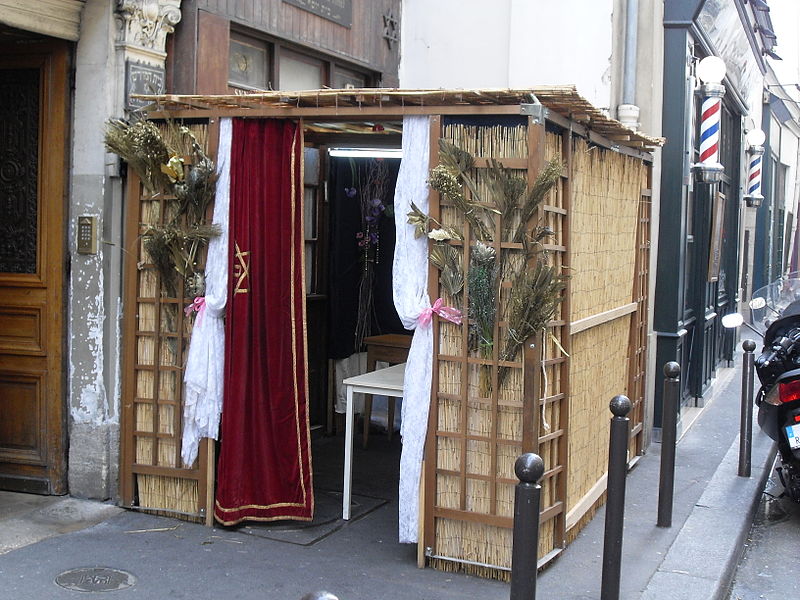Sukkot (Hebrew: סוכות) begins on Tishrei 15, the fifth day after Yom Kippur. Sukkoth is the last of the Shalosh R’galim (“three pilgrimage festivals”).
This festival is sometimes referred to as Zeman Simkhateinu, the Season of our Rejoicing. Sukkot lasts for 7 days. The 2 days following the festival are separate holidays, Shemini Atzeret and Simkhat Torah, but are commonly thought of as part of Sukkot.

The festival of Sukkot is mentioned in the Torah- Leviticus 23:33:
No work is permitted on the first and second days of the holiday. Work is permitted on the remaining days. These intermediate days on which work is permitted are referred to as Chol Ha-Mo’ed.
In honor of the holiday’s historical significance, we are commanded to dwell in temporary shelters, as our ancestors did in the wilderness. The commandment to “dwell” in a sukkah can be fulfilled by simply eating all of one’s meals there. However, if possible, one should live in the sukkah as much as possible, including sleeping in it.
A sukkah must have at least three walls covered with a material that will not blow away in the wind. A sukkah may be any size, so long as it is large enough for you to fulfill the commandment of dwelling in it. The roof of the sukkah must be made of material referred to as sekhakh (literally, covering). The sekhakh must be put on last.
חג שמח
Credits:
Jewishvirtuallibrary
https://www.suka.lanegev.co.il/a4.jpg







 Available on WhatsApp
Available on WhatsApp
Join the conversation (No comments yet)